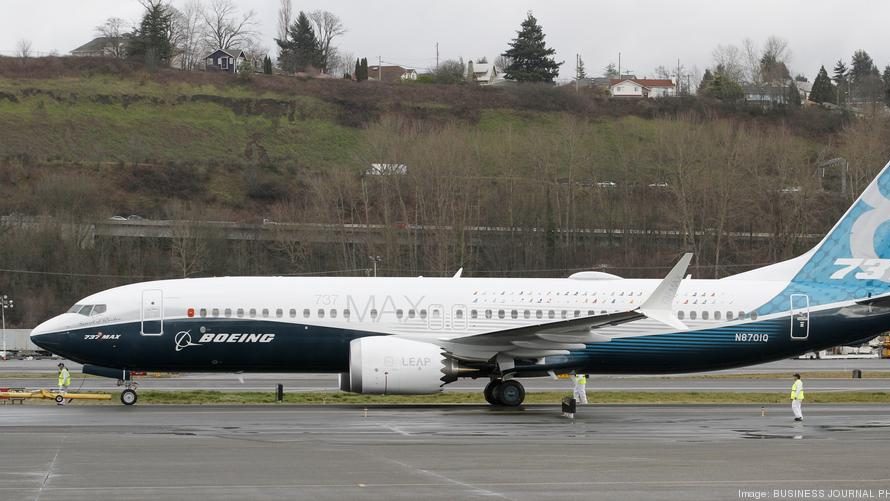Article originally published in the Philadelphia Business Journal on March 18, 2019
The crash of Ethiopian Airlines Flight 302 on March 10 has dominated the news. This was the second crash of Boeing Company’s new 737 Max 8 aircraft in six months. On March 13, President Donald Trump ordered the grounding of the Max 8 and 9 aircraft. With his order, the U.S. was the last country to ground these planes.
The Federal Aviation Administration claims they decided to ground the aircraft after learning that the flight trajectory of Ethiopian Airlines flight had “some similarities” to the Lion Air Flight 610 that crashed Oct. 29, 2018. After an examination of the plane’s black box, this was confirmed.
Dallas Morning News reporter Cary Aspinwall investigated pilot complaints of the 737 Max 8 logged on NASA’s federal data base. In an NPR article dated March 13, Aspinwall stated that prior to the Ethiopian Airlines crash, five pilots reported issues with the plane’s stall prevention system. Pilots also claimed they were not told that the system is different than previous 737 aircraft and were not properly trained on the new system.
Boeing reports that they are making changes to the anti-stall system software that should be ready for installation in the 737 Max 8/9 aircraft by the end of April. After the Ethiopian Airlines crash and knowing of pilot complaints, why did the FAA put passengers’ lives at risk from March 10 to March 13 before ordering these aircraft grounded?
The FAA should have taken the lead in grounding these aircraft after the second crash. It’s embarrassing that the U.S. was the last country to do so. Why didn’t Boeing itself tell carriers to ground the planes until changes to the anti-stall system software were made? Immediately doing so would have enhanced Boeing’s reputation for putting passenger safety first.
On March 13, Boeing CEO Dennis Muilenburg made a phone call to Trump, reportedly telling him the 737 Max 8/9 aircraft were safe. He was trying to head off grounding of the planes by the FAA. If the planes were safe, why were the software changes to the anti-stall system needed?
Boeing should have taken a lesson from Johnson & Johnson who in 1982, exercised its own initiative and recalled Tylenol from the market due to product tampering with cyanide. Seven people died as a result of ingesting the cyanide-laced Tylenol.
J&J’s action is still considered the gold standard of crisis management and an example of a corporation and its CEO being out in front taking responsibility for its product. It was the ethical thing to do. Instead, after the second crash, Boeing kept on insisting that the 737 Max aircraft were safe to fly. You always want to control your own destiny. If you don’t, another party will control it for you, perhaps in a way not to your liking.
If Boeing management was reluctant to ground these aircraft after the second crash, why didn’t the board of Boeing convince management that safety is paramount, and it was in the best interest of passengers and the company to ground the planes before being ordered by the FAA to do so?
Common sense and good critical judgement state that when there is even a low risk of a catastrophe, one doesn’t take the risk, regardless of the economic consequence. That was the view of other countries when they grounded their fleets of 737 Max 8/9s. Why not the FAA or Boeing?
It’s hard to imagine the magnitude of further reputational damage and loss of life as well as the additional liability of Boeing if a third 737 Max 8/9 crash occurred before the software was updated.
There is a passage in the West Point Cadet Prayer that reads, “Make us to choose the harder right instead of the easier wrong.” Leaders, remember this, especially when you run into situations that require difficult operational and ethical decisions. You and your company will be judged on what you decide.
Stan Silverman is founder and CEO of Silverman Leadership. He is a speaker, advisor and nationally syndicated writer on leadership, entrepreneurship and corporate governance. Silverman earned a Bachelor of Science degree in chemical engineering and an MBA degree from Drexel University. He is also an alumnus of the Advanced Management Program at the Harvard Business School. He can be reached at Stan@SilvermanLeadership.com. Follow Silverman on LinkedIn here and on Twitter, @StanSilverman.


Stan,
Excellent point. Never compromise safety.
Joe Carleone